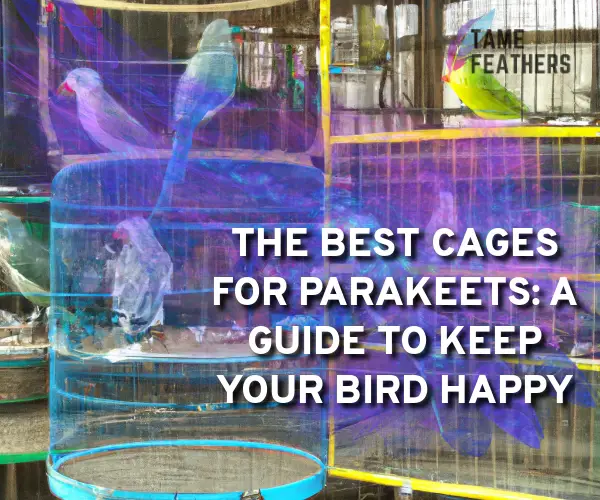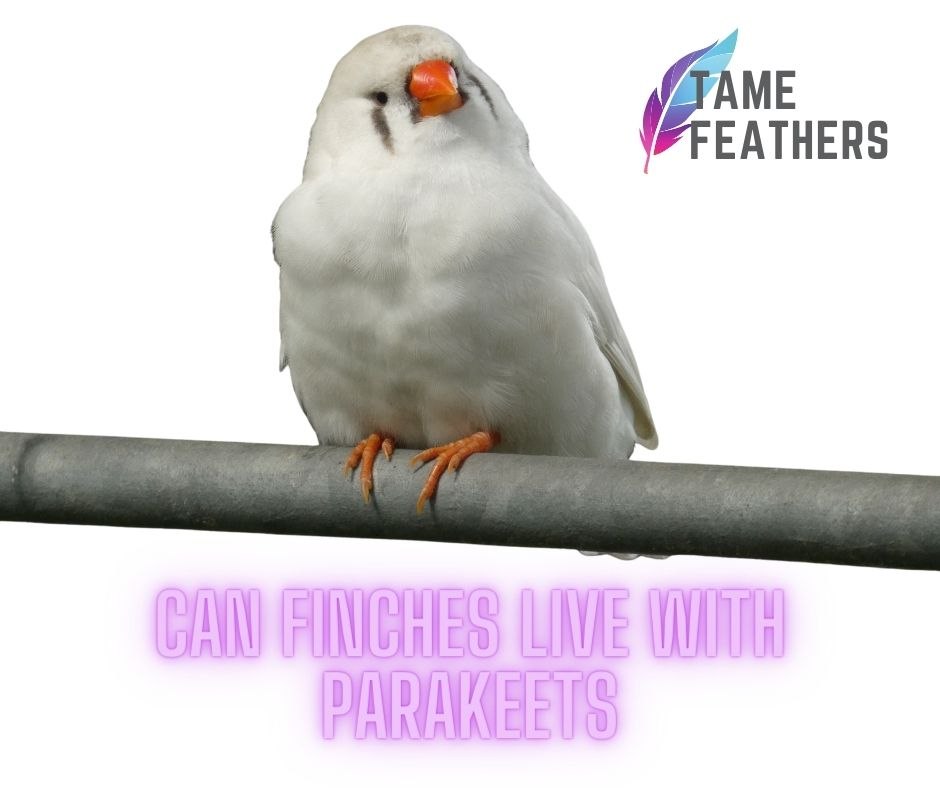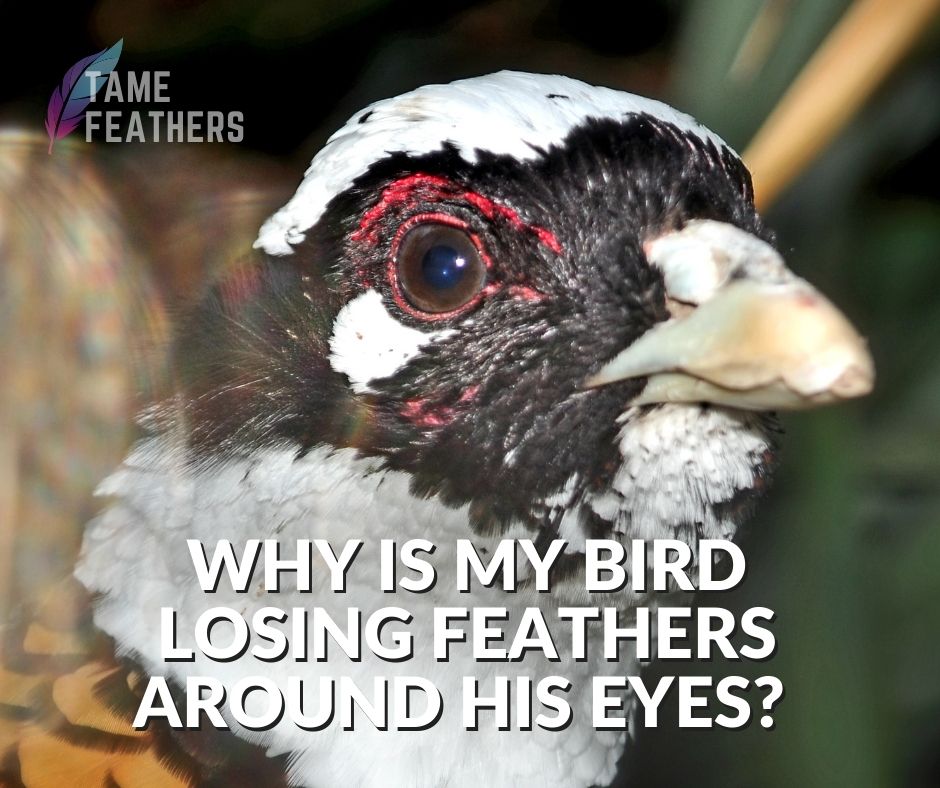## The Right Size For Your Parakeet The size of the cage you choose for your parakeet is one of the most critical considerations you should make. In general, a larger cage is preferable to a smaller cage since it offers more space for your bird to walk around in and investigate its surroundings. When choosing the appropriate size of cage, you should make sure that the breadth permits at least two birds to fly side-by-side without colliding with each other. This is an important consideration. You should also bear in mind that in order to house numerous parakeets in the same area, you will need to get a cage that is sufficiently large to accommodate all of the birds while also allowing for adequate space between them.
When choosing a proper size for your pet’s house, it is also necessary to take into consideration the amount of space that will be available between the various perches and toys. Your feathered friend should have lots of opportunities to play and engage with these things during the normal course of their activities, so make sure that you distribute these things in an even manner across the entirety of the space contained within the cage. ## Choosing A Material That Is Durable And Safe Because parakeets are energetic birds with sharp claws and strong beaks, it is crucial to pick a material that is both sturdy and safe while searching for cages for them. Plastic cages are more likely to break or bend easily over time, whereas metal cages are less likely to break or bend easily over time. However, plastic cages may offer more design options, such as colorful patterns or fun shapes, which can create an enjoyable environment inside their home. Metal cages tend to have a longer lifespan than plastic cages. It is essential to consider not only the visual appeal but also the ease with which it can be maintained. Cages made of wood need to be cleaned on a regular basis, but cages made of metal simply require an occasional wipe down.
Before making any purchases, you should always remember to check if there are any dangerous toxins present such as lead paint or coating. These substances can have serious health implications if they are ingested by animals (including birds! ), so you should take extra precaution against anything that could be hazardous. ## Flight Space & Accessibility When looking for cages, it is essential to strike a balance between flying space and accessibility, as having too much open area could put your pets in danger, while having too little could make them feel as like they are being held captive within their homes all day long. In general, the majority of parakeets require a horizontal space of approximately six feet in order to maximize their ability for flight. At the same time, the structure itself must give owners access through doors or hatches that are strategically positioned around the structure.
If you want to further improve accessibility within this setup, try putting some shelves close together near openings where food bowls or water containers could sit. This way, both the owner and the caretaker will be able to reach these items without needlessly disturbing the occupants whenever maintenance tasks need to be done. These inquisitive critters are able to investigate even farther thanks to the addition of ladders to the exterior of walls, which provide more opportunities to climb to locations that are inaccessible from the ground level. ## Placement Of Perches & Toys Because parakeets enjoy perching high above ground level, placing several sturdy branches at various levels within the enclosure helps encourage natural behaviors such as preening while keeping wings toned muscularly due to regular exercise flights taking place below. Parakeets love to perch high above ground level.
Furthermore, the addition of a few well-positioned swings hanging nearby provides ample opportunity for them to amuse themselves by jumping from one another, testing their strength and coordination skills along with the opportunity for social interaction with other flock members who inhabit the same dwelling, thereby bringing vibrancy and life into an otherwise static environment, thereby creating a happy and healthy atmosphere in which everyone involved lives happily ever after… well, almost. ## Cleanliness & Comfort Regularly cleaning out bird enclosures keeps the inhabitants safe, healthy, and free from harmful bacteria buildups. It also ensures that no odor smell permeates the air surrounding the property, which is an aspect that is frequently overlooked despite being an integral part of the overall wellbeing of individuals living within the confines of its four walls.
Additional conveniences required for the provision of adequate nesting boxes The use of bedding materials that are soft helps to regulate temperature and prevents an excessive loss of body heat, which is especially important during the winter months in the coldest climates available on the market today. There is a range of designs, sizes, styles, and prices to suit the preferences and budgets of everybody involved in the process, including the species chosen and careta We feel it’s a win-win situation all around!! ## Safety Features For Unsupervised Hours When selecting birdcages, safety should be your top consideration; make sure the locks are secure. placed doors and windows to eliminate the possibility of probable escapees during unsupervised hours equally crucial feeders dishes with firmly mounted bars to reduce the likelihood of spillage accidents leading to injury or death for either side Regardless of the circumstances, bad events can and will take place. This point cannot be emphasized enough; it is of genuinely paramount importance.
In addition, keep an eye out for sneaky, dangerous animals. gaining entry into the enclosure mesh netting works wonders Avoiding hungry predators who hide in the shadows, make double certain that you examine everything twice. Holding securely in place are bolts, hooks, clasps, and other fixtures. Please thank very much and warmly appreciate the efforts performed on behalf of our feathered companions indeed go forth in good fortune peace, and prosperity, and remain blessed!!!




